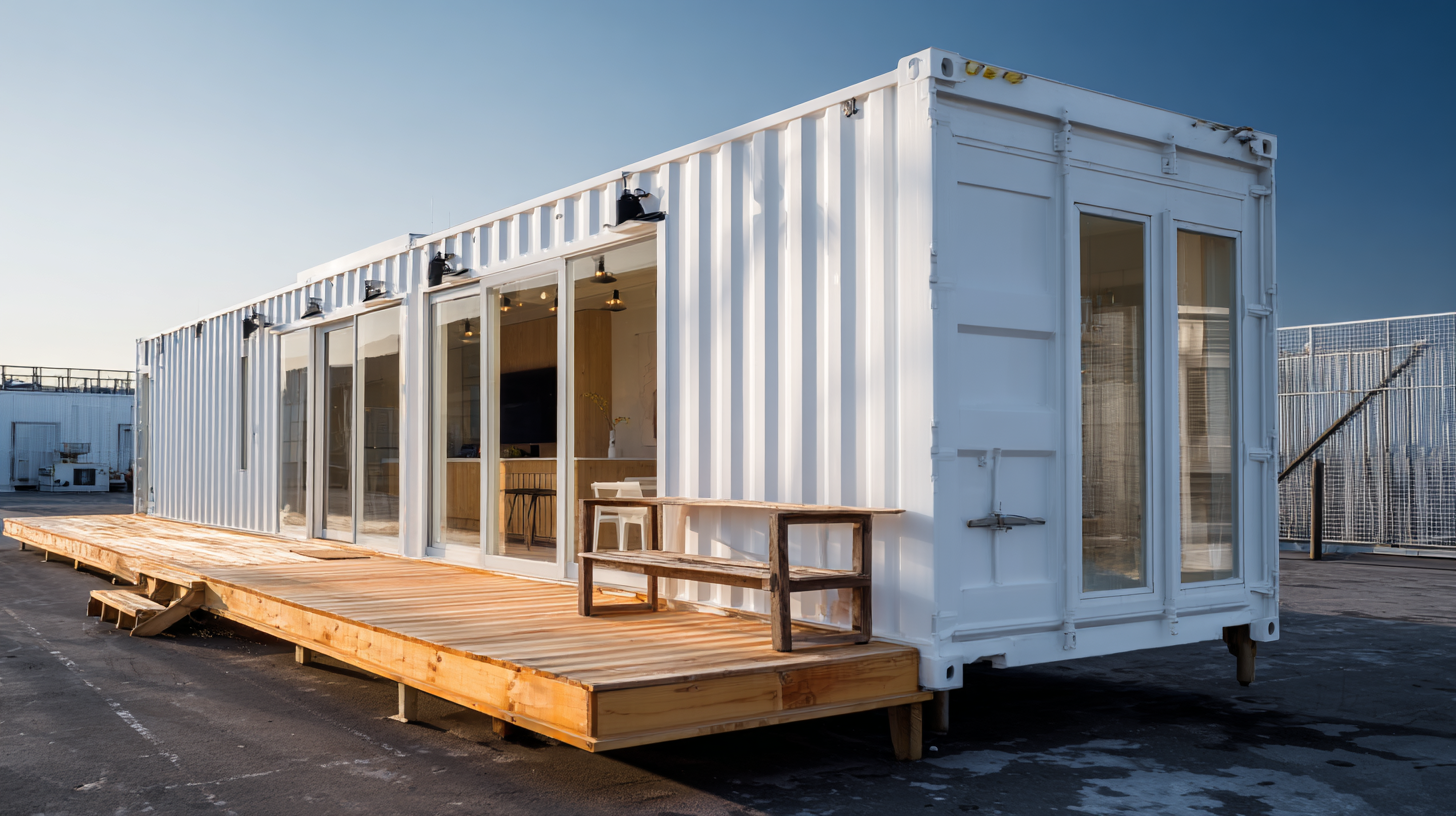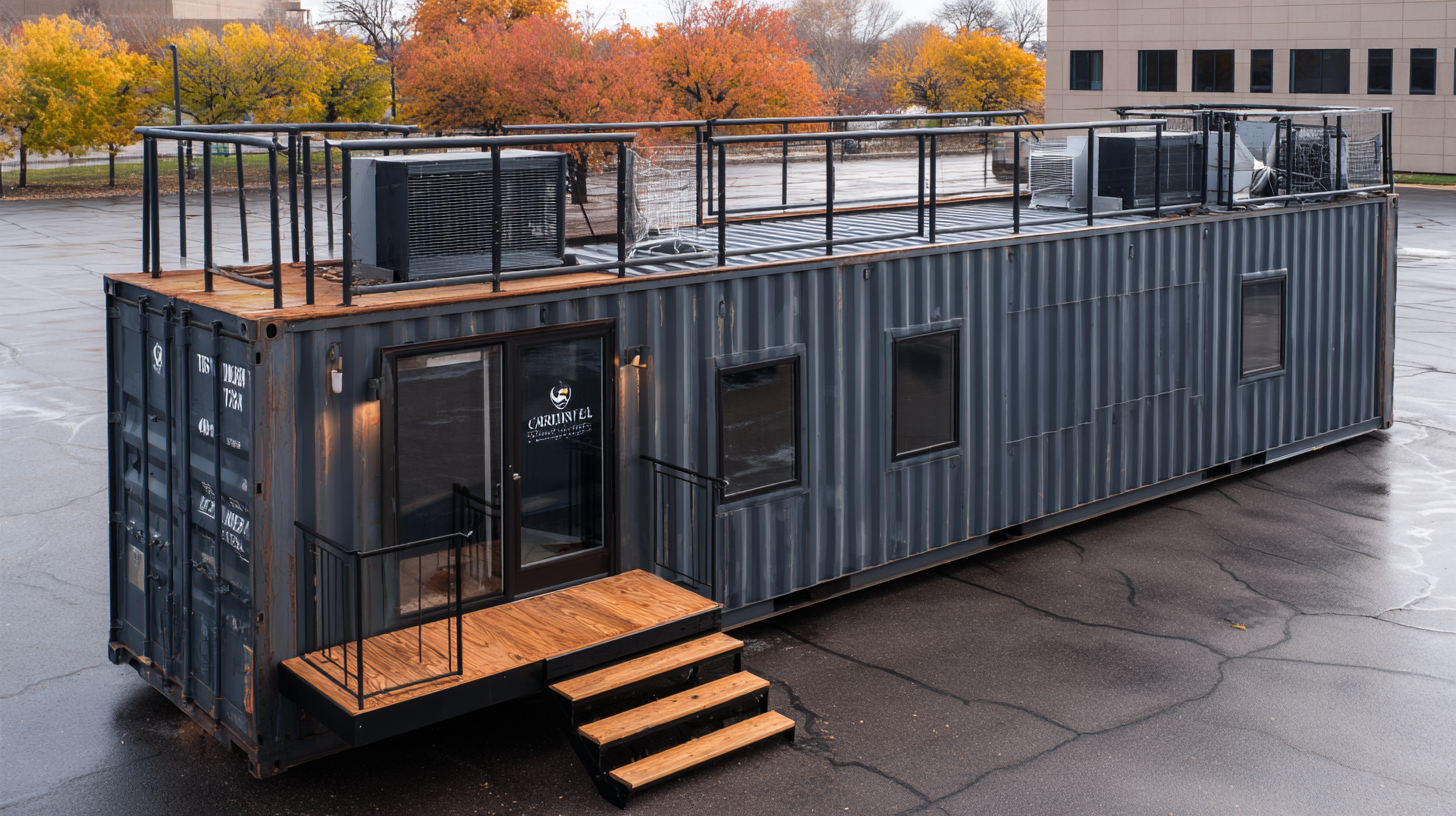The increasing global population and rapid urbanization have necessitated innovative and sustainable living solutions. The UN reports that by 2050, nearly 68% of the world’s population is expected to reside in urban areas, leading to a significant demand for affordable and eco-friendly housing options. Shipping containers, with an estimated 26 million unused units worldwide, present a unique opportunity to address this challenge. The World Economic Forum notes that transforming these containers into livable spaces not only repurposes materials but also reduces construction waste and energy consumption significantly. In fact, utilizing shipping containers can cut down building costs by up to 30% compared to traditional construction methods. As the demand for sustainable living solutions rises, harnessing the potential of shipping containers could play a pivotal role in creating resilient, efficient, and affordable housing, thereby contributing to a more sustainable future.

The rising demand for sustainable living solutions in urban areas highlights a significant consumer shift towards functionality-driven design. Homeowners are increasingly focused on blending aesthetic appeal with practical use, particularly when renovating their spaces. This trend emphasizes the need for flexible living environments that can adapt to various lifestyle changes, accommodating both work and leisure without compromising style.
In tandem with evolving residential needs, the transformation of our food systems plays a critical role in addressing climate change, especially within urban settings. Currently, global food systems contribute to one-third of total greenhouse gas emissions. By promoting a circular economy around food, we have the potential to reduce this figure by nearly 50%. As cities take the lead in this transition, innovative and sustainable urban planning can create more resilient communities, directly impacting both environmental health and quality of life for their residents.

The impact of shipping container architecture on reducing housing shortages has become increasingly crucial in today's fast-paced urbanization and rising real estate costs. According to the Global Housing Report 2022 by UN-Habitat, the world faces a staggering shortfall of 1.6 billion housing units. Shipping container homes present an innovative solution to this crisis, offering a cost-effective and sustainable alternative to traditional construction methods. The average cost of developing a shipping container home can be as low as $10,000 to $35,000, significantly less than conventional homes, which often exceed $200,000.
Moreover, shipping containers are easily modular, making them adaptable for a variety of residential designs. The reuse of these containers not only reduces material waste but also minimizes the environmental impact, leading to a smaller carbon footprint. A study by the World Economic Forum indicates that constructing with recycled materials can reduce resource extraction by up to 75%. As urban areas seek to combat the challenges of affordability and sustainability, shipping containers represent a powerful tool for creating adaptable, eco-friendly living spaces that can swiftly address housing shortages.
| Feature | Benefits | Impact on Housing Shortages | Sustainability Factors |
|---|---|---|---|
| Affordability | Lower construction costs, quick relocation | Can provide immediate housing solutions | Recyclable materials |
| Modularity | Flexible designs for various uses | Adaptable for different community needs | Reduces waste through re-use |
| Speed of Construction | Quick assembly and occupancy | Addresses urgent housing crises faster | Utilizes prefabrication techniques |
| Transportability | Easily moved to new locations | Useful in disaster relief scenarios | Mobile living solutions |
| Environmental Impact | Lower carbon footprint | Sustainable living alternatives | Energy-efficient designs |
The rising demand for sustainable living solutions has unlocked the potential of shipping containers as innovative housing alternatives. Container homes are not only cost-effective but also offer impressive energy efficiency and various environmental benefits. The compact nature of these homes minimizes the use of materials, and their modular design allows for easy customization to meet different living needs while maintaining a smaller ecological footprint.
To enhance energy efficiency in container homes, consider incorporating renewable energy sources such as solar panels. This reduces reliance on traditional electricity grids and can significantly lower utility costs. Additionally, using high-quality insulation materials can help regulate indoor temperatures, making the living space more comfortable year-round.
When planning your container home, opt for eco-friendly materials and appliances. Choose energy-efficient lighting systems, low-flow water fixtures, and sustainably sourced furniture to further reduce your environmental impact. Implementing these practices not only contributes to sustainable living but also promotes a healthier lifestyle for you and your community.
Shipping container homes have emerged as a compelling alternative to traditional housing, especially in the current climate of rising construction costs. While the average cost of building a traditional home has soared in recent years, often exceeding $300,000, shipping container homes provide a more affordable solution, with costs typically ranging from $10,000 to $50,000 depending on size, design, and location. This significant cost difference is partially attributed to the simpler construction processes associated with container homes, as they can be assembled more quickly, enabling faster occupancy and a quicker return on investment.
Additionally, the shipping container housing market is projected to grow substantially, with predictions estimating a market size of USD 95.74 billion by 2033, reflecting a Compound Annual Growth Rate (CAGR) of around 21% from 2024. This growth underscores a broader consumer shift towards non-traditional housing options as individuals seek sustainable, cost-effective living solutions that align with eco-friendly values. As urban areas grapple with issues like student housing shortages—where millions of beds are needed across Europe—shipping containers can be repurposed efficiently to address these urgent housing crises.

Shipping containers have emerged as a revolutionary solution for sustainable living, showcasing innovative designs and customizations that cater to diverse housing needs. The adaptability of these structures allows for efficient use of space, enabling architects and designers to create functional and aesthetically pleasing living environments. From tiny homes to multi-unit dwellings, container housing utilizes repurposed materials, reducing waste and energy consumption while promoting a more eco-friendly lifestyle.
As the global market for mobile container homes is projected to reach $1.6 billion by 2025, and to grow at a 7.5% compound annual growth rate to $3.06 billion by 2034, the demand for customizable container living solutions is on the rise. This growth can be attributed to innovative designs that incorporate smart technology, sustainable materials, and flexible layouts. By tapping into the potential of shipping containers, designers are transforming traditional housing concepts into modern, sustainable alternatives that meet the evolving needs of today's society.
This chart illustrates the growing popularity and adoption of shipping container homes across different regions over the past five years, emphasizing their potential as sustainable living solutions.


